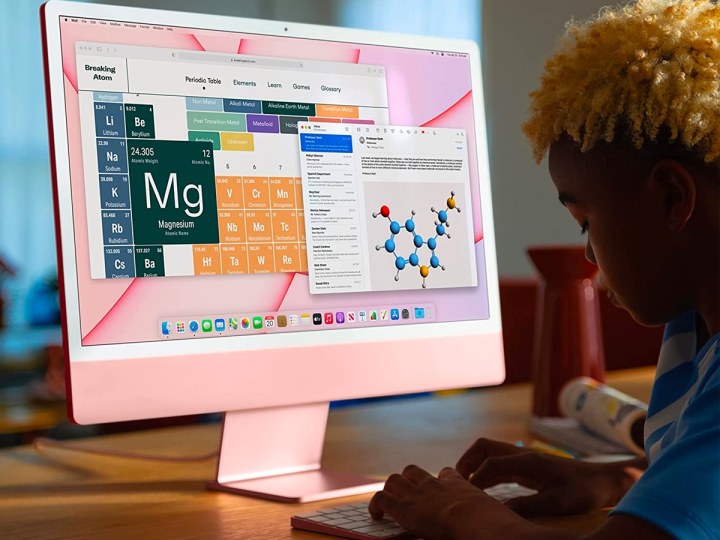Apple’s been coy about the iMac these past few years. Sure, it has the M1 24-inch iMac, but it’s gone on pretending the beloved 27-inch iMac never existed.
A new rumor gives some optimism for those of us hoping that Apple would someday revisit a larger, more powerful version of the iMac. The report doesn’t come from one of the usual leakers, such as Ross Young or Mark Gurman — so treat it with a healthy dose of skepticism. But I, for one, am excited about the prospect of this rumor being true.

The rumor, which comes from a display analyst at Omdia, indicates that larger OLED iMacs are indeed in the works. That alone would be exciting. Back in the day, the iMac was known for having a super-high-resolution, cutting-edge display. But since the birth of both mini-LED and OLED, the iMacs have missed the boat entirely, with Apple’s attention being pulled to external displays and MacBook Pros. The 24-inch iMac is more of an entry-level Mac, so both in terms of performance and display, it’s not the high-end machine many were waiting for. An OLED iMac, which is part of a long-rumored transition from mini-LED to OLED across Apple’s lineup, would finally provide a substantial upgrade for the quality of the iMac’s screen, which has been stagnant for almost a decade at this point.
And it’s not just the quality of the display we’re talking about. It’s also the size and, by extension, performance. The report says that we are getting not just a 32-inch iMac, but also a 27-inch and 42-inch model. The timing of the switch to OLED maps onto previous reports, aiming at 2027 as the year when this big change will happen. But more excitedly, the timeline also points to a 32-inch mini-LED iMac coming later this year. And oh boy, that’s an exciting proposition.

A larger iMac, especially one with a high-end mini-LED display, also has room for significantly more performance — at least, in theory. If Apple could squeeze a configuration of the M2 or M3 with more GPU cores into a larger-format iMac, that’d be gold. It would be the return of the 27-inch iMac in the truest sense — and a completion of the true transition to Apple Silicon (except for the Mac Pro, of course).
An even larger 42-inch model? I mean, sky’s the limit there in terms of how much performance you can pack in.
Unfortunately, the rumor of a 32-inch iMac or iMac Pro coming later this year doesn’t line up with other reports. Apple seems to be planning an update to the 24-inch iMac, but the introduction of a larger iMac has been absent from more consistent reporters.
I do, however, believe Apple will eventually return to one of these larger iMacs in the future at some point. Maybe it won’t be this year, and who knows — maybe the OLED transition in 2027 would be the perfect time. But I sure do hope there’s some validity to this rumor.
Editors' Recommendations
- Does your Mac need antivirus software in 2024? We asked the experts
- Don’t download the latest macOS Ventura update just yet
- MacBook Pro 16 vs. MacBook Pro 14: The important differences
- The biggest threat to the MacBook this year might come from Apple itself
- I was wrong about using Stage Manager on Mac

